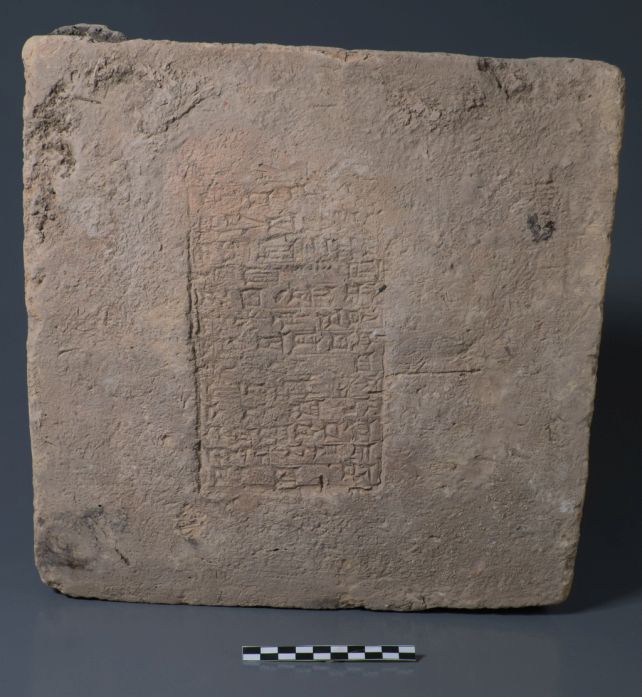
Clay bricks, employed in constructing one of history’s most remarkable civilizations, are providing scientists with a novel instrument to unravel the Earth’s past.
Crafted around 3,000 years ago, the Mesopotamian bricks harbor iron oxide grains that when deciphered correctly, unveil intriguing shifts in the Earth’s magnetic field, which encompasses our planet in a protective shield.
The significant advancement is embodied in a conveniently inscribed description that enables scientists to ascertain the age of the bricks. This, in turn, facilitates the accurate dating of any geological records embedded within them.
This technique provides us with a fresh approach to enhance our comprehension of how Earth’s magnetic field has shifted and developed throughout history. Consequently, it could assist us in making more accurate predictions about its future behavior.
“We often depend on dating methods such as radiocarbon dates to get a sense of chronology in ancient Mesopotamia,” explains archaeologist Mark Altaweel of University College London.
“However, some of the most common cultural remains, such as bricks and ceramics, cannot typically be easily dated because they don’t contain organic material. This work now helps create an important dating baseline that allows others to benefit from absolute dating using archaeomagnetism.”
Earth’s magnetic field is dynamic, changing over time. It originates from the geodynamo within the planet’s core, where a rotating, convecting, and electrically conducting fluid transforms kinetic energy into electric and magnetic fields that extend into space. Variations in the magnetic field can result from external influences, such as the solar wind, or internal changes within the planet, where the geodynamo operates.
Regardless of their origin, these alterations can be preserved in surface materials. For instance, in molten magma, magnetic grains align with Earth’s magnetic field, essentially fixing that orientation as the magma cools and solidifies into volcanic rock. Scientists utilize these rocks as a record of the magnetic field, delving into the field of study known as paleomagnetism.
Under the guidance of archaeologist Matthew Howland from Wichita State University in the US, a team of researchers explored Mesopotamian bricks as a means to advance the field of archaeomagnetism: the study of Earth’s magnetic field as preserved in human-made objects.

The method is rather straightforward. Each of the 32 Mesopotamian clay bricks in the study bears the stamped name of the king who ruled at the time of its creation. To determine the age of the material, the researchers narrowed down the most probable range of years during which each king likely held power.
Subsequently, they delicately removed a small fragment from each of the bricks and employed a magnetometer to gauge the alignment of minute grains of iron oxide embedded within. This method enabled them to broadly reconstruct the behavior of the planetary magnetic field over approximately 2000 years, ranging from the 3rd to the 1st millennium BCE.
Afterward, they juxtaposed their findings with other reconstructions of the magnetic field obtained from archaeomagnetic studies.
Altogether, this extensive dataset from various regions suggests the existence of the Levantine Iron Age geomagnetic Anomaly (LIAA), a puzzling surge in magnetic field strength believed to have occurred over present-day Iraq between approximately 1050 and 550 BCE.
The team’s reconstruction not only verified the existence of the LIAA but also offered one of the rare records of the anomaly from within Iraq itself. Additionally, the analysis uncovered brief yet intense fluctuations during the rule of Nebuchadnezzar II, spanning from about 604 to 562 BCE, demonstrating that Earth’s magnetic field can undergo significant changes over short periods.
This accomplishment has a dual impact: aligning the bricks with the magnetic field also serves in reverse, providing scientists with a means to validate the chronological periods during which specific kings governed Mesopotamia.
This is fascinating, as even though we know the sequence of rulers, the precise dates of each king’s accession to the throne have remained unclear, attributed to incomplete historical records.
“The geomagnetic field is one of the most enigmatic phenomena in earth sciences,” says geophysicist Lisa Tauxe of the Scripps Institution of Oceanography in the US.
“The well-dated archaeological remains of the rich Mesopotamian cultures, especially bricks inscribed with names of specific kings, provide an unprecedented opportunity to study changes in the field strength in high time resolution, tracking changes that occurred over several decades or even less.”
The study is now available in the Proceedings of the National Academy of Sciences.





